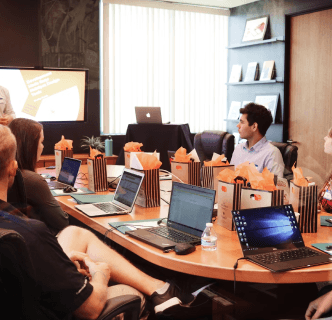
Optimize Onboarding with Automation
Nov 17, 2025
10
The first few weeks at a new job are a critical period. They set the tone for an employee's entire journey with your company. A great onboarding experience can lead to higher engagement, faster productivity, and better retention. A poor one can leave new hires feeling lost and disconnected, increasing the chances they'll leave within the first year. As teams become more distributed and the pace of business accelerates, manual onboarding processes are no longer enough.
This is where automation comes in. By automating key parts of the onboarding journey, you can create a consistent, efficient, and engaging experience for every new hire. This guide will walk you through how to optimize your onboarding process with automation, from the underlying strategy to the practical tools you can implement today. We will cover why it matters, where to apply it, what tools to use, and how to get started.
Why Onboarding Is More Critical Than Ever
Onboarding is far more than just a welcome email and an office tour. It's a structured process designed to integrate a new employee into the company's culture, processes, and social fabric. When done right, it makes new hires feel valued and prepared to contribute. When done poorly, the consequences are significant. New employees take longer to reach full productivity, feel isolated, and are at a higher risk of early departure.
A strong onboarding program delivers clear benefits:
Faster Time-to-Productivity: It gives new hires the information and tools they need to start performing their roles effectively and quickly.
Improved Employee Retention: A positive initial experience strengthens an employee's commitment to the company, reducing turnover.
Stronger Cultural Alignment: It introduces new team members to the company's values, mission, and unique way of working.
Consistent Experience: It ensures every new hire, regardless of their department or location, receives the same high-quality welcome.
Automation standardizes this process, making it scalable and freeing up your HR team to focus on the human elements that truly matter, like mentorship and personal connection.
Key Areas Where Automation Drives Onboarding Success
Automation is not about removing the human touch; it's about handling repetitive tasks so you can enhance it. Here are the most impactful areas to apply automation in your onboarding process.
Paperwork and Administrative Tasks
Before a new hire even walks through the door, there's a mountain of paperwork to handle. Automating this workflow is a quick win. You can automatically send contracts, tax forms, and policy documents for digital signature before the first day. This reduces manual data entry for the HR team and allows the new hire to complete tedious tasks at their convenience.
IT and Systems Access
Nothing is more frustrating for a new employee than showing up on day one without a working computer or access to essential software. You can automate the IT setup process by creating a workflow that triggers upon a signed offer letter. This can include creating user accounts, assigning software licenses, and ordering necessary hardware. The IT team receives automated tickets, ensuring everything is ready to go from the moment the employee starts.
Structured Onboarding Checklists
A new role comes with a lot of information to absorb. Automated checklists provide a clear roadmap for the new hire's first days and weeks. You can create tasks with deadlines for completing training modules, meeting key team members, and reviewing important documents. Automated reminders keep both the new hire and their manager on track, ensuring no critical steps are missed.
Feedback and Progress Tracking
How do you know if your onboarding is effective? By asking. Automation makes it easy to schedule and send out feedback surveys at key milestones, such as at the end of week one, 30 days, and 90 days. This provides valuable insights into the new hire's experience while making them feel heard. It also allows you to track progress against onboarding goals and identify areas for improvement in your process.
Tools for Automation: From Simple to Advanced
The right tool depends on your company's size, budget, and specific needs. You don't have to invest in a complex system from day one.
Simple and Low-Cost Solutions
For small to medium-sized businesses, you can start with tools you may already be using.
Trello or Notion: These flexible platforms are great for creating visual onboarding boards. You can build a template with columns for pre-boarding, the first week, and the first 90 days. Each new hire gets their own board, and you can create checklists and assign tasks to different team members (HR, IT, manager).
Project Management Tools (Asana, ClickUp, Monday.com): These tools offer more advanced automation capabilities. You can set up rules that automatically assign tasks, send reminders, and move items through a workflow. For example, when a "Contract Signed" task is completed, it can automatically trigger a "Create Email Account" task for the IT department.
Specialized HR and Onboarding Platforms
As your organization grows, a dedicated onboarding platform can centralize the entire process. These tools are built specifically for HR workflows and offer deep automation features. They can integrate with your existing HRIS to pull employee data, manage document signing, deliver training content, and provide detailed analytics on onboarding effectiveness. They often include features for cultural integration, like automatically introducing new hires to their teams or assigning them an onboarding buddy.
Practical Steps for Implementing Onboarding Automation
Ready to get started? Follow these steps to build an automated onboarding workflow that works.
Map Your Current Process: Before you automate anything, you need to understand your existing onboarding journey. Document every step, from the moment an offer is accepted to the end of the probationary period. Identify who is responsible for each task and what information is needed at each stage.
Choose the Right Tool: Based on your process map and company size, select a tool that fits your needs. Start simple if you're unsure. A well-organized Trello board is better than a poorly implemented enterprise system.
Create Role-Based Templates: Not every role requires the same onboarding. Create different templates for different departments or seniority levels. A software engineer will have different technical setup needs than a salesperson. Standardize the core elements but customize the specifics.
Build Your Automation Rules: Start with the basics. Set up an automation that creates a new onboarding checklist when a candidate is marked as "hired" in your recruitment system. Configure automatic reminders for upcoming deadlines. As you get more comfortable, you can build more complex workflows that integrate with other systems.
Integrate with Other Systems: To unlock the full power of automation, connect your onboarding tool to your other HR and IT systems. An integration between your HRIS and IT service desk can eliminate manual requests for account creation, saving time and reducing errors.
Measure and Refine: Launch your automated process and gather feedback. Use the data from your surveys and task completion rates to find bottlenecks and areas for improvement. A great onboarding process is never truly "done"—it should evolve with your company and the needs of your employees.
As you implement your automated onboarding process, keep these core principles in mind to ensure success.
Clarity is Key: The new hire should have a clear plan for their first 30, 60, and 90 days. This includes their role expectations, key objectives, and who they can turn to for help.
Day One Readiness: Ensure all necessary tools, accounts, and hardware are ready before the new employee starts. A smooth first day sets a positive precedent.
Balance Automation with Human Connection: Automation should handle the logistics so your team can focus on building relationships. Schedule check-ins, assign a buddy or mentor, and facilitate introductions with the team. Automation supports the human experience; it doesn't replace it.
Centralize Information: Create a single source of truth where new hires can find company information, training materials, and contact lists. This empowers them to find answers independently.
By thoughtfully applying automation, you can transform your onboarding from a series of administrative chores into a strategic advantage that welcomes, prepares, and retains top talent.















